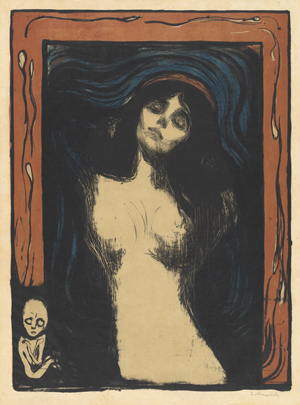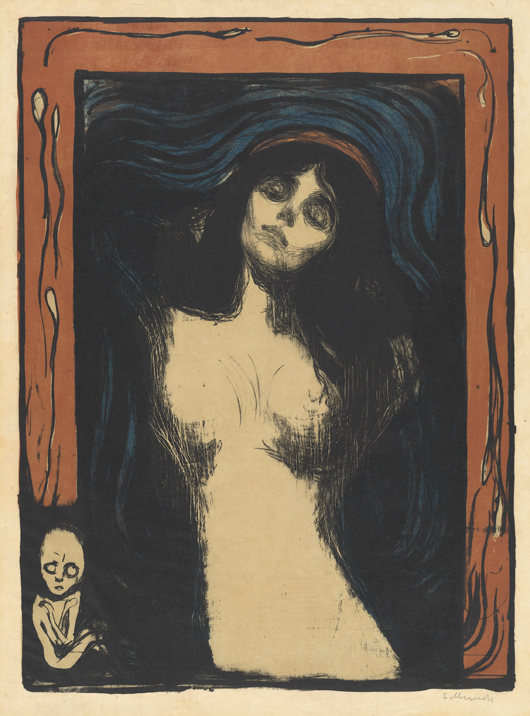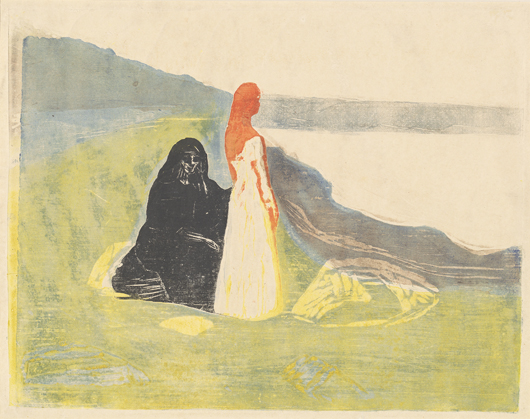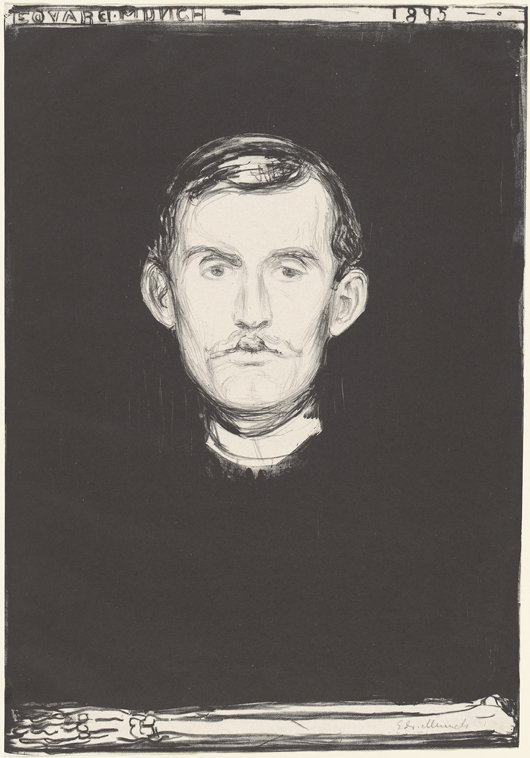
WASHINGTON – The National Gallery of Art marks the 150th anniversary of the birth of Edvard Munch, Norway’s most famed painter and printmaker, with an exhibition of more than 20 renowned works from the Gallery’s collection. On view from May 19 through July 28, on the ground floor of the West Building, “Edvard Munch: A 150th Anniversary Tribute” includes Geschrei (The Scream) (1895), The Madonna (1895), and a unique series of six variant impressions, Two Women on the Shore (1898).
“In recent decades the National Gallery of Art has presented three major exhibitions of Munch’s work, the last in 2010,” said Earl A. Powell III, director, National Gallery of Art. “We are pleased to bring together these stellar prints and drawings to celebrate this milestone.”
The exhibition was organized by the National Gallery of Art, Washington. It is made possible by The Exhibition Circle of the National Gallery of Art.
Edvard Munch (Dec. 12, 1863–Jan. 23, 1944) both absorbed and influenced the work of innumerable artists throughout the world. He is today revered for his passionate visual expression of intense human experiences: “Art is your heart’s blood,” he said. His most famous image—a screaming figure, its eyes wide with horror—is an icon of anxiety, alienation and anguish. Attraction, love, jealousy and death were also recurring themes. His continual reworking of these subjects is commonly linked to Munch’s personal struggles. He made many telling portraits: tender visions of women and sensitive studies of lovers, children and adolescents. However, the real power of his art lies in his ability to extrapolate universal human experiences from his own life.
Raised in Oslo (then called Christiania), Munch studied at the Royal School of Design before a state scholarship enabled him to study in Paris in 1889. Printmaking was an essential component of Munch’s art for 50 years following his introduction to the graphic media in Berlin in 1894. With the capacity to produce multiple works from a single plate, stone, or woodblock, printmaking served to expand the accessibility of the artist’s themes to the general public and to provide income. Like his repeated revisions in paintings, prints also enabled him to experiment with his imagery; by altering color, line, texture and composition, Munch drastically changed the appearance and emotional impact of a given subject. Thus a woman kissing a man could appear amorous in one print and predatory in another. In many cases Munch continued to print impressions of his graphic works years after the creation of the original matrix.
The exhibition curator is Andrew Robison, Andrew W. Mellon senior curator of prints and drawings, National Gallery of Art.
ADDITIONAL IMAGES OF NOTE




